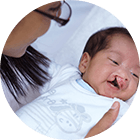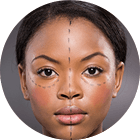Athletes Foot
Introduction
Anatomy
When athlete’s foot fungus (dermatophytes) infects the skin, the basal cells respond by overproducing cells. As the excess cells reach the skin’s surface, they cause the symptoms and appearance of athlete’s foot.
Causes
Symptoms
Diagnosis
Treatment
You should keep your feet clean and dry. Wear shoes or sandals that allow good airflow. Do not cover your feet during sleep. Wear cotton socks, and change them every day or if they get damp.
Prevention
There are many steps that you can take to help prevent athlete’s foot including:
• Do not share shoes or socks with others.
• Wear shoes or shower shoes in public areas, such as locker rooms, gyms, and showers.
• Keep your feet clean and dry.
• Wear roomy shoes with good air circulation, or sandals.
• Wear cotton socks and change them daily or sooner if the socks are damp.
• Keep your floors and showers very clean at home.
• Use antifungal spray or powder daily.
Am I at Risk
Complications
Open skin from scratching the athlete’s foot rash is at risk for a bacterial skin infection (cellulitis). Contact your doctor if your skin develops signs of a bacterial infection such as swelling, red streaks, and pain. The athlete’s foot fungus can spread to other parts of the body, such as the toenails, heels, and hands. People with diabetes should contact their doctors if they have athlete’s foot.

Copyright © - iHealthSpot Interactive - www.iHealthSpot.com
This information is intended for educational and informational purposes only. It should not be used in place of an individual consultation or examination or replace the advice of your health care professional and should not be relied upon to determine diagnosis or course of treatment.
The iHealthSpot patient education library was written collaboratively by the iHealthSpot editorial team which includes Senior Medical Authors Dr. Mary Car-Blanchard, OTD/OTR/L and Valerie K. Clark, and the following editorial advisors: Steve Meadows, MD, Ernie F. Soto, DDS, Ronald J. Glatzer, MD, Jonathan Rosenberg, MD, Christopher M. Nolte, MD, David Applebaum, MD, Jonathan M. Tarrash, MD, and Paula Soto, RN/BSN. This content complies with the HONcode standard for trustworthy health information. The library commenced development on September 1, 2005 with the latest update/addition on February 16, 2022. For information on iHealthSpot’s other services including medical website design, visit www.iHealthSpot.com.















